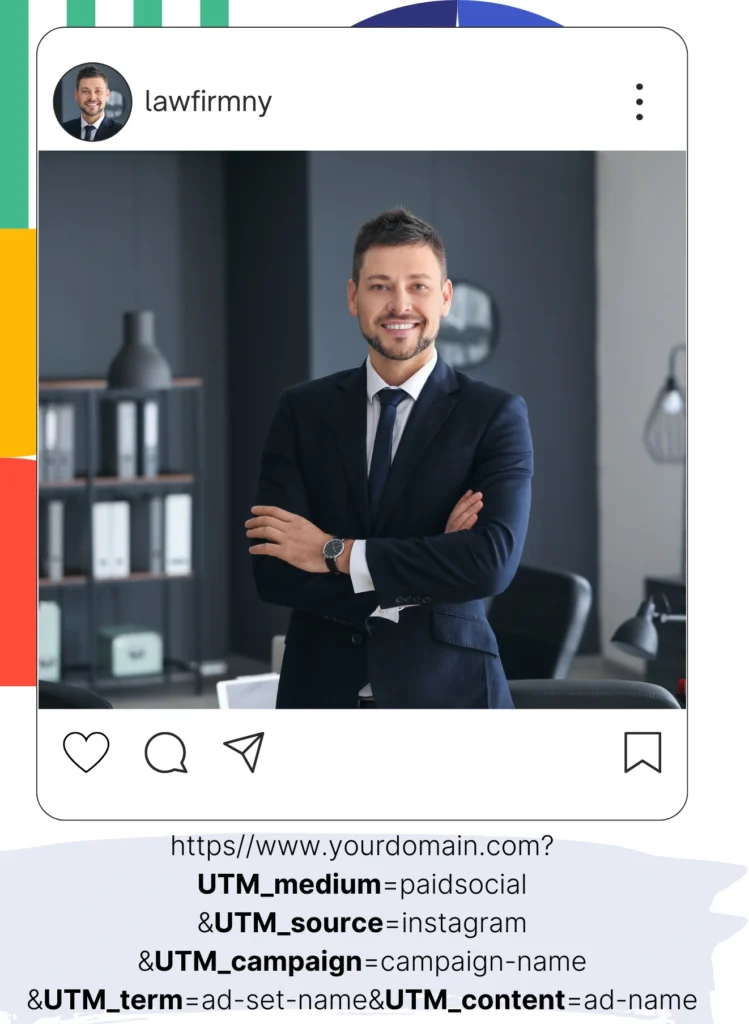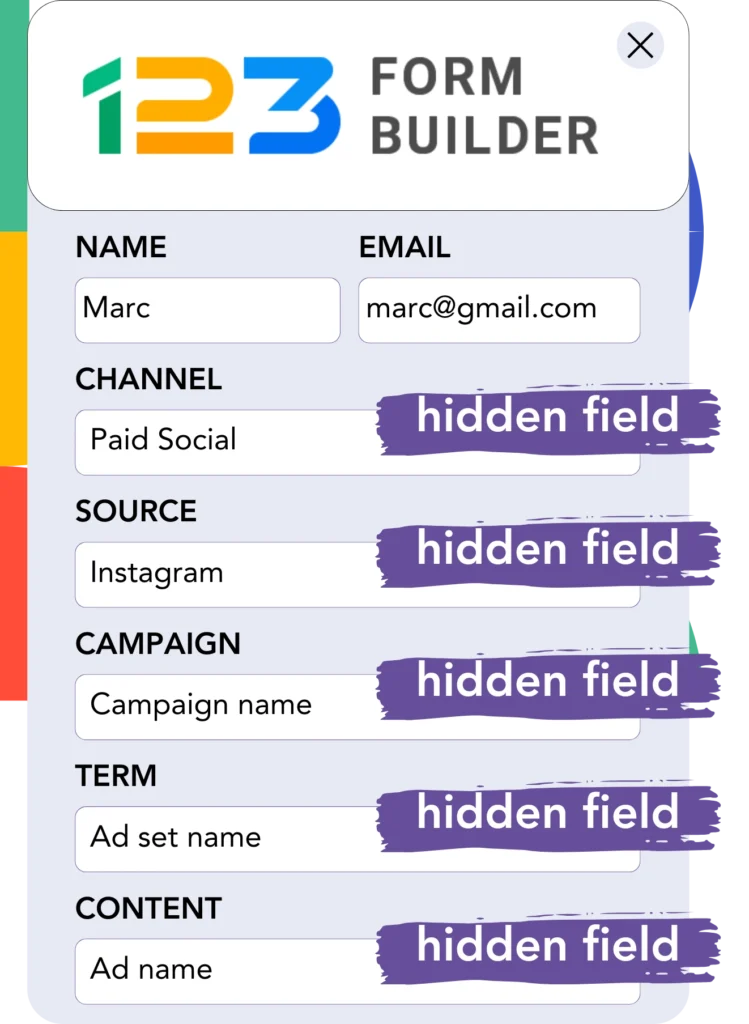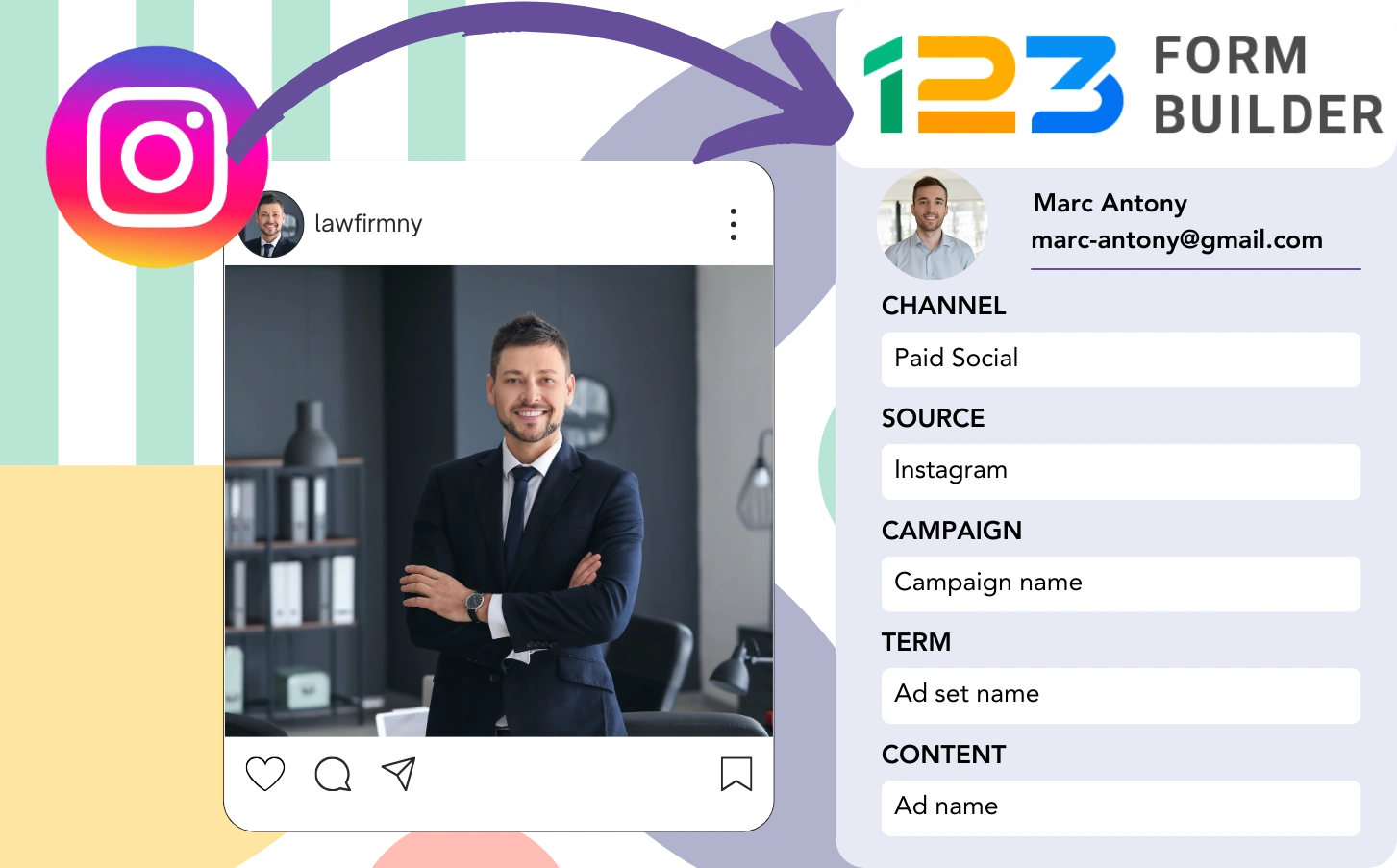Using 123FormBuilder to gather Instagram leads doesn’t allow you to tie each lead to a particular ad. In the same manner, when a lead becomes a customer, tracking their origin back to a specific Instagram ad is not possible.
The lack of tracking complicates measuring your Instagram ads impact, leaving you unable to see which ads attract leads and customers. As a result, multiple ads may be funded without insight into their success rates.
There’s an efficient solution to trace each lead to the Instagram campaign, ad set, and particular ad responsible for creating it.
Let’s go through each step!
How to track Instagram ads in 123FormBuilder
Step 1: Add Leadsources in the head tag of your website

Leadsources is an easy tracking tool for lead sources. Installed on your site, it gathers up to 7 origin data points per lead.
➡️ Sign up to Leadsources.io for free
➡️ Add the Leadsources tracking code to your site
Step 2: Add the UTM parameters to your Instagram ads

Add UTM parameters to your ad link to record Instagram ad data like campaign, ad set, and ad. Here’s an example setup:
UTM_medium=paidsocialUTM_source=instagramUTM_campaign=campaign-nameUTM_term=ad-set-nameUTM_content=ad-name
The completed version of the URL should look like this:
https://www.yourdomain.com?UTM_medium=paidsocial&UTM_source=instagram&UTM_campaign=campaign-name&UTM_term=ad-set-name&UTM_content=ad-nameNote: Leadsources records every source detail for leads, ensuring complete data collection, even without UTM parameters.
Step 3: Add the hidden fields in 123FormBuilder

Hidden fields are form elements that remain invisible to users, storing data that is submitted along with the form.
When a 123FormBuilder is submitted, Leadsources automatically populates hidden fields with data related to Instagram ads. This data is saved directly in your 123FormBuilder.
Step 4: Capture the Instagram ads data in 123FormBuilder

When users engage with your advertisements and reach your site, Leadsources fetches the Instagram campaign, ad set, ad data, and beyond.
Leadsources efficiently populates the hidden fields in 123FormBuilder using Instagram ads data.
Hence, once the form is submitted, you will have access to the Instagram ad data and lead details in 123FormBuilder.
How does Leadsources work?
When visitors come to your site, Leadsources fetches Instagram ad data and populates the hidden fields of your form. Once the form is submitted, this information, including lead details like name and email, is sent to 123FormBuilder.
Leadsources monitors all of this source data linked to each lead:
| Lead source data | Fetched automatically |
| Channel | ✅ |
| Source | ✅ |
| Campaign | ✅ OR use UTM_campaign |
| Content | UTM_content parameter is required |
| Term | UTM_term parameter is required |
| Landing page | ✅ |
| Landing page subfolder | ✅ |
As reflected in the table above, when UTM parameters cannot be applied—such as with organic sources like Google search or referral sources—Leadsources continues to collect some lead source data:
- Channel
- Source
- Campaign
- Landing page
- Landing page subfolder
Unlike traditional tools, Leadsources monitors lead sources from every marketing channel, both organic and paid.
Performance reports: Lead, sales, and revenue by source
By utilizing Instagram ad data tracked in 123FormBuilder, you can compile performance reports like:
- Leads, sales, and revenue by channel
- Leads, sales, and revenue by source
- Leads, sales, and revenue by campaign (aka. Instagram campaign)
- Leads, sales, and revenue by term (aka. Instagram ad set)
- Leads, sales, and revenue by content (aka. Instagram ad)
This lets you adjust your Instagram budget according to the campaigns, ad sets, and ads that result in the highest leads, sales, and revenue.
Let’s outline some of the reports you can produce:
1. Lead source reports
Create performance reports that indicate the number of leads created through:
- Channel
- Source
- Campaign (aka. Instagram campaign)
- Term (aka. Instagram ad set)
- Content (aka. Instagram ad)
- Landing page
- Landing page subfolder
Example #1: Leads by channel
This report allows an assessment of the channel that generates the highest leads.

Example #2: Leads by Instagram campaign
You can now focus on a specific lead source (like Instagram) and count how many leads come from each Instagram campaign.

Example #3: Leads by Instagram ad
After recognizing the Instagram campaign that drives the highest volume of leads, you can assess which specific ad set or ad contributes to that success.

2. Sales and revenue source reports
With a clear understanding of which Instagram campaign, ad set, and ad are attracting leads, we need to assess whether these leads convert into sales and revenue.
In order to reach this goal, integrate your leads with a CRM such as GoHighLevel. This facilitates the tracking of sales and revenue from various channels, sources, Instagram campaigns, ad sets, ads, landing pages, and landing page subfolders.
With this knowledge, you can adjust your Instagram ad strategy to prioritize the channels, sources, campaigns, ad sets, and ads that drive exceptional sales and revenue.
You can produce several types of sales and revenue reports, such as:
- Sales and revenue by channel
- Sales and revenue by source
- Sales and revenue by campaign
- Sales and revenue by term (e.g., Instagram ad set)
- Sales and revenue by content (e.g., Instagram ad)
- Sales and revenue by landing page
- Sales and revenue by landing page subfolder
Example Scenario:
| Channel | Search Paid | Social Paid |
|---|---|---|
| Leads | 50 | 75 |
| Sales | 5 | 6 |
| Average Order Value | $150 | $100 |
| Revenue | $750 | $600 |
Once the ads were activated on Google and Instagram, the preliminary “Leads by Channel” report indicated that Social Paid ads (Instagram) secured more leads than Search Paid ads.
However, after analyzing the sales and revenue data within your CRM, you discovered that the Search Paid channel produced higher revenue with fewer leads compared to the Social Paid channel. This insight led you to revise your budget to allocate more resources to the Search Paid channel.
LeadSources tracks the source of each lead in 123FormBuilder, whether they come from ads, organic search, social, email, etc. and syncs that data with each submission. See the full breakdown on the lead source in 123FormBuilder page.

